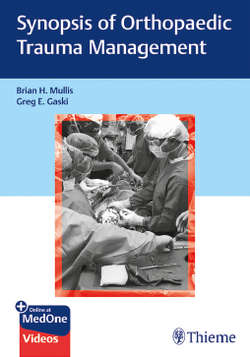Читать книгу Synopsis of Orthopaedic Trauma Management - Brian H. Mullis - Страница 91
На сайте Литреса книга снята с продажи.
IV. Behaviors of Tumor Subtypes
ОглавлениеA. A review of pathologic fractures would be remiss without discussion of tumor subtype behavior. Not all metastatic lesions behave the same and many vary in their response to adjuvant treatments such as radiation and chemotherapy.
B. These “personalities” directly affect oncologic approach, and not respecting these differences can impact construct survivorship, lead to pitfalls in management, and compromise quality of life.
C. Prostate metastases tend to be blastic and the role for prophylactic fixation is low in these cases.
D. Renal and thyroid metastases are notorious for their hypervascularity—liberal use of tourniquet control, when applicable, and strong consideration for preoperative embolization can significantly limit blood loss and assist with local hemostasis during procedures for these hypervascular lesions (▶Fig. 11.3).
E. Plasma cell neoplasms (plasmacytoma and multiple myeloma) and lymphoma respond favorably to adjuvants such as radiation and chemotherapy.
F. Large extraosseous soft-tissue masses can impart significant alteration in normal anatomy. These tumor burdens will significantly decrease with radiation and chemotherapy, and there is little role for aggressively excising these masses unless arthroplasty is being performed for pathologic fracture.
G. Renal cell carcinoma and melanoma are classically less responsive to radiation therefore alternative strategies including the use of surgical adjuvants is helpful to decrease tumor burden and risk of local disease progression (▶Table 11.3).
H. Neoplasms of mesenchymal lineage are termed sarcomas and their behavior, approach, and treatment greatly differs from that of carcinoma, myeloma, or lymphoma.
I. The extent of bone and soft-tissue sarcoma management is beyond the scope of this chapter, but a basic understanding of their presentation and management is instrumental to avoid complications when treating pathologic fractures.
1. Any biopsy performed in the suspicion of a bone sarcoma should be carried out at an institution that is best suited for definitive management.
Fig. 11.3 Angiogram demonstrating a hypervascular proximal humerus renal metastases that was successfully embolized prior surgery.
Table 11.3 Surgical adjuvants
| Mechanical | Chemical | Thermal |
| Curettage | Phenol | Argon beam coagulation |
| Burr | Sterile/distilled water | Electrocautery |
| Hydrogen peroxide (H2O2) | Liquid nitrogen (cryotherapy) | |
| Polymethylmethacrylate |
2. The biopsy tract should be in line with a future limb salvage approach and meticulous hemostasis should be used to avoid contamination. If clinical suspicion is high for a primary musculoskeletal malignancy, the biopsy should typically be referred to a musculoskeletal oncologist to perform.
3. Neurovascular structures and intermuscular planes should be avoided.
